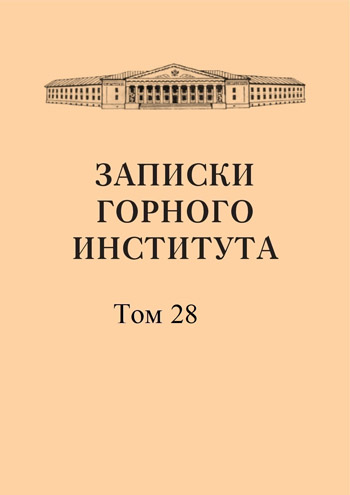On the issue of permafrost formation and degradation of permafrost in non-stationary temperature fields
Abstract
The theoretical calculation of the movement of the permafrost boundary inside the soil under the influence of temperature changes on the surface is of great scientific importance in permafrost science: a whole range of issues of the dynamics of the permafrost process depends on its solution, including the correct scientific analysis of the current state of the permafrost zone, its changes (degradation and onset) under the influence of climate change, the correct definition of the role and place of the thermal factor in a number of geological and other factors of permafrost formation, etc. However, this calculation can also have important practical significance for a number of problems of industrial development of the permafrost area, for example, for establishing a rational thermal regime for the currently empirically used methods of artificial thawing of frozen deposits, for industrial construction in the permafrost zone, etc. The problem of permafrost penetration into the soil or permafrost thawing is similar to the problem of propagation of the solidification boundary into the molten mass. Unfortunately, the latter can be solved exactly only under stationary conditions, with the initial temperature of the liquid being the same everywhere and a constant temperature given on the surface, taken below the freezing point.
References
- Andrianov P. I., Freezing temperature of soils, Proceedings of the Far Eastern Complex Expedition, 1936, issue 1.
- Andrianov P. I., Thermal conductivity of soils and grounds, Proceedings of the Permafrost Committee, 1939, vol. VII.
- Kovner S. S., On the mathematical theory of freezing, Proceedings of the 1st geological exploration conference of the Main Directorate of the Northern Sea Route, GUSMP Publishing House, 1936, vol. III.
- Leibenzon L. S., Manual of Oilfield Engineering, ONTI, 1931.
- Lurie A. I., Operational calculus, GITTL, 1951.
- Rubinstein L. I., On the process of soil freezing, Bulletin of the USSR Academy of Sciences, geographical and geophysical series, 1947, vol. XI, no. 37.
- Sumgin M. I., Kachurin S. P., Tolstikhin N. I., Tumel V. F., General Permafrost Science, USSR Academy of Sciences, 1940.
- Ter-Pogosyan A. S., Zhurnal Tekhnicheskoy Fiziki, 1945, No. 15, p. 942.
- Ter-Pogosyan A. S., On the Theory of Thawing of Frozen Soils, Manuscript, Collections of the Leningrad Mining Institute, 1946.
- J. Stefan, Sitzungsberichte der Wiener Akademie, 1889, No. 98. 473.
- J. Stefan, Wiener Monathefte fur Mathematik und Physik. 1890, No. 1, 1.
